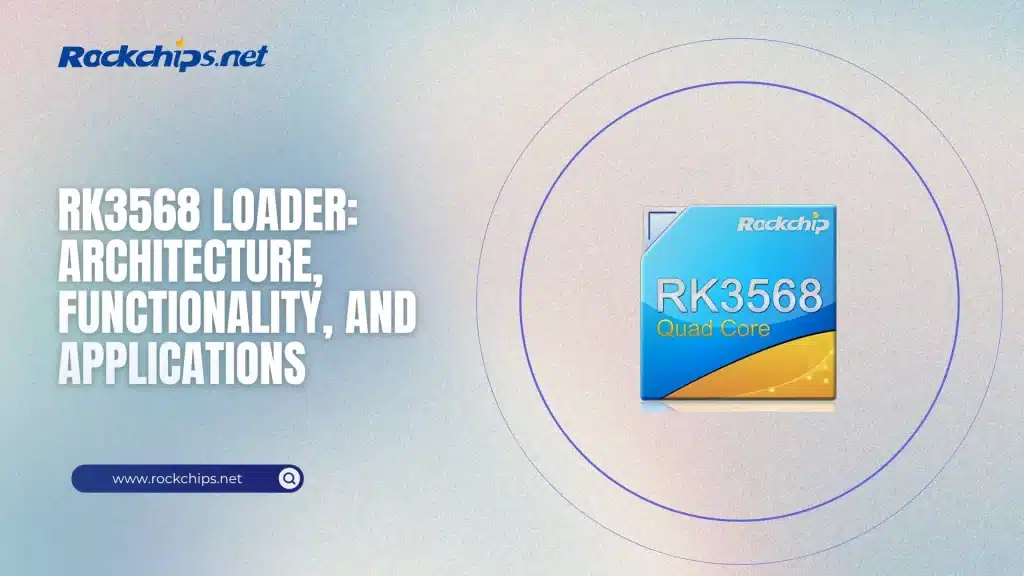
The RK3568 loader plays a critical role in the boot sequence of Rockchip’s popular mid-range SoC, serving as the foundational software component that bridges hardware initialization and the main operating system. As embedded systems become increasingly complex, understanding the loader’s operation becomes essential for developers working with RK3568-based devices. This technical deep dive explores the architecture, functionality, and practical considerations of the RK3568 loader, while comparing it with related solutions like the RK3576 platform. Whether you’re debugging boot issues or customizing the startup sequence, this guide provides the professional engineering perspective needed to work effectively with this crucial system component.
RK3568 Loader Architecture and Boot Sequence
The RK3568 loader follows Rockchip’s multi-stage boot architecture, designed to progressively initialize hardware while maintaining security and reliability. This sophisticated approach ensures the system can recover from various fault conditions while supporting flexible configuration options for different product implementations.
Boot ROM (Mask ROM)
The initial execution begins in the immutable Boot ROM (commonly called Mask ROM), which performs the following critical functions:
- Basic CPU core initialization and clock configuration
- Verification of the first-stage loader signature using Rockchip’s cryptographic scheme
- Loading of the initial loader (typically from SPI flash or eMMC)
- Fallback mechanism to USB or UART download modes if primary boot fails
Trusted Firmware-A (TF-A) Integration
The RK3568 loader architecture integrates with ARM’s Trusted Firmware-A (TF-A) to provide a secure foundation:
- BL1 (Boot Loader stage 1) handles basic DRAM initialization
- BL2 implements the secure monitor and additional hardware bring-up
- Optional BL31 for systems requiring ARM TrustZone functionality
U-Boot as the Final Loader Stage
The Rockchip-specific U-Boot variant serves as the final loader stage before OS handoff:
- Implements device tree-based hardware configuration
- Supports Rockchip’s proprietary DDR initialization routines
- Provides extensive debugging capabilities through serial console
- Handles secure boot chain verification when enabled
Developers can access the open-source components of this boot chain through Rockchip’s rkbin repository, which contains essential binary blobs and tools for working with the RK3568 loader.
RK3568 Loader Configuration and Customization
Customizing the RK3568 loader requires careful consideration of both hardware constraints and software requirements. The configuration process involves multiple interdependent components that must be properly synchronized for reliable operation.
DDR Initialization Parameters
The RK3568 loader includes sophisticated DDR memory initialization routines that must be tuned for specific board designs:
- Timing parameters vary by DDR type (LPDDR4, DDR4, etc.)
- Board-specific PCB layout characteristics affect signal integrity settings
- Voltage levels must match the installed memory components
- Training patterns are optimized during board bring-up
Secure Boot Implementation
For production systems, the RK3568 loader supports multiple security features:
- RSA-2048 or ECDSA-P256 signature verification
- Secure JTAG lockdown options
- Encrypted firmware storage capabilities
- Rollback protection for firmware updates
Performance Optimization Techniques
Advanced developers can optimize loader performance through several methods:
- Minimizing the time between power-on and DRAM readiness
- Parallelizing hardware initialization where possible
- Optimizing the U-Boot image size to reduce load time
- Implementing fastboot protocols for production flashing
The following table compares key loader characteristics between the RK3568 and similar Rockchip SoCs:
| Feature | RK3568 | RK3399 | RK3576 |
|---|---|---|---|
| Boot Media Support | eMMC, SPI, SD, USB | eMMC, SPI, SD, USB | eMMC, SPI, SD, USB, NVMe |
| Secure Boot | RSA-2048/ECDSA | RSA-2048 | ECDSA-P384 |
| DDR Types | LPDDR4/DDR4 | LPDDR3/DDR3 | LPDDR4X/DDR5 |
| Loader Size Limit | 256KB (BL1) | 128KB (BL1) | 512KB (BL1) |
Debugging and Troubleshooting the RK3568 Loader
When developing with the RK3568, engineers frequently encounter loader-related challenges that require systematic debugging approaches. Common issues range from hardware compatibility problems to configuration errors in the boot sequence.
Common Loader Failure Modes
Typical symptoms of loader problems include:
- System hangs immediately after power-on
- Intermittent boot failures
- DRAM initialization errors
- Secure boot verification failures
- USB download mode not engaging
Debug Tools and Techniques
Effective debugging requires proper tools and methodology:
- Serial console output (UART2 typically carries loader debug)
- Rockchip’s proprietary Windows-based upgrade tools
- JTAG debugging for low-level analysis
- Logic analyzers for signal integrity verification
- Current measurement during boot for power sequencing issues
Conclusion
The RK3568 loader represents a sophisticated boot solution that balances flexibility, security, and performance for mid-range embedded applications. Through its multi-stage architecture incorporating Rockchip’s proprietary initialization code with open-source components like U-Boot, it provides developers with both out-of-the-box functionality and deep customization capabilities. Understanding the loader’s operation is essential for troubleshooting boot issues, implementing secure systems, and optimizing startup performance. As Rockchip continues to evolve its SoC offerings with products like the RK3576, the fundamental loader concepts remain consistent while gaining enhanced features and capabilities. Engineers working with the RK3568 should familiarize themselves with both the public documentation and the practical realities of loader development to maximize their success with this versatile platform.